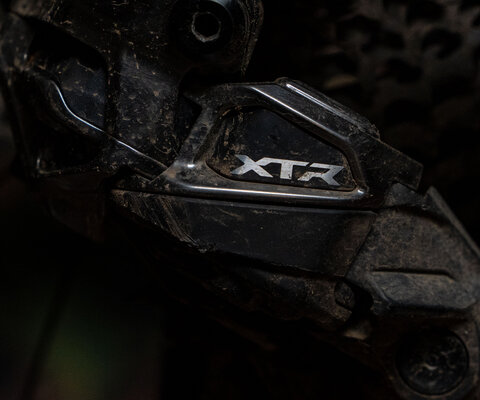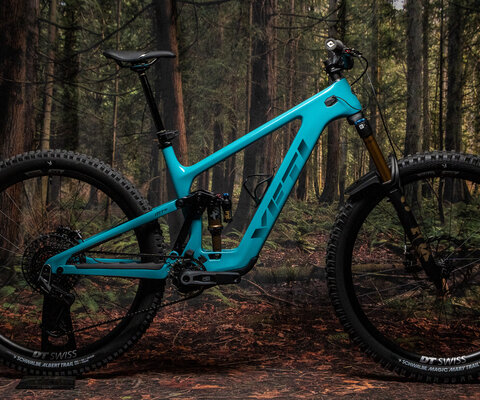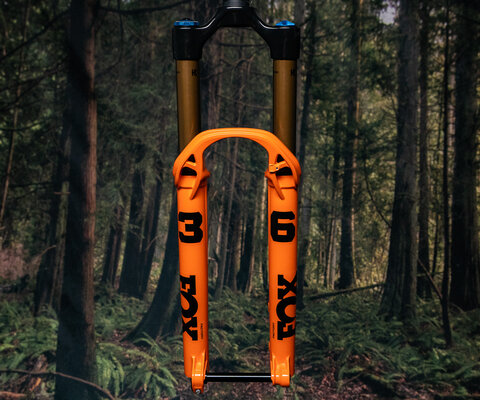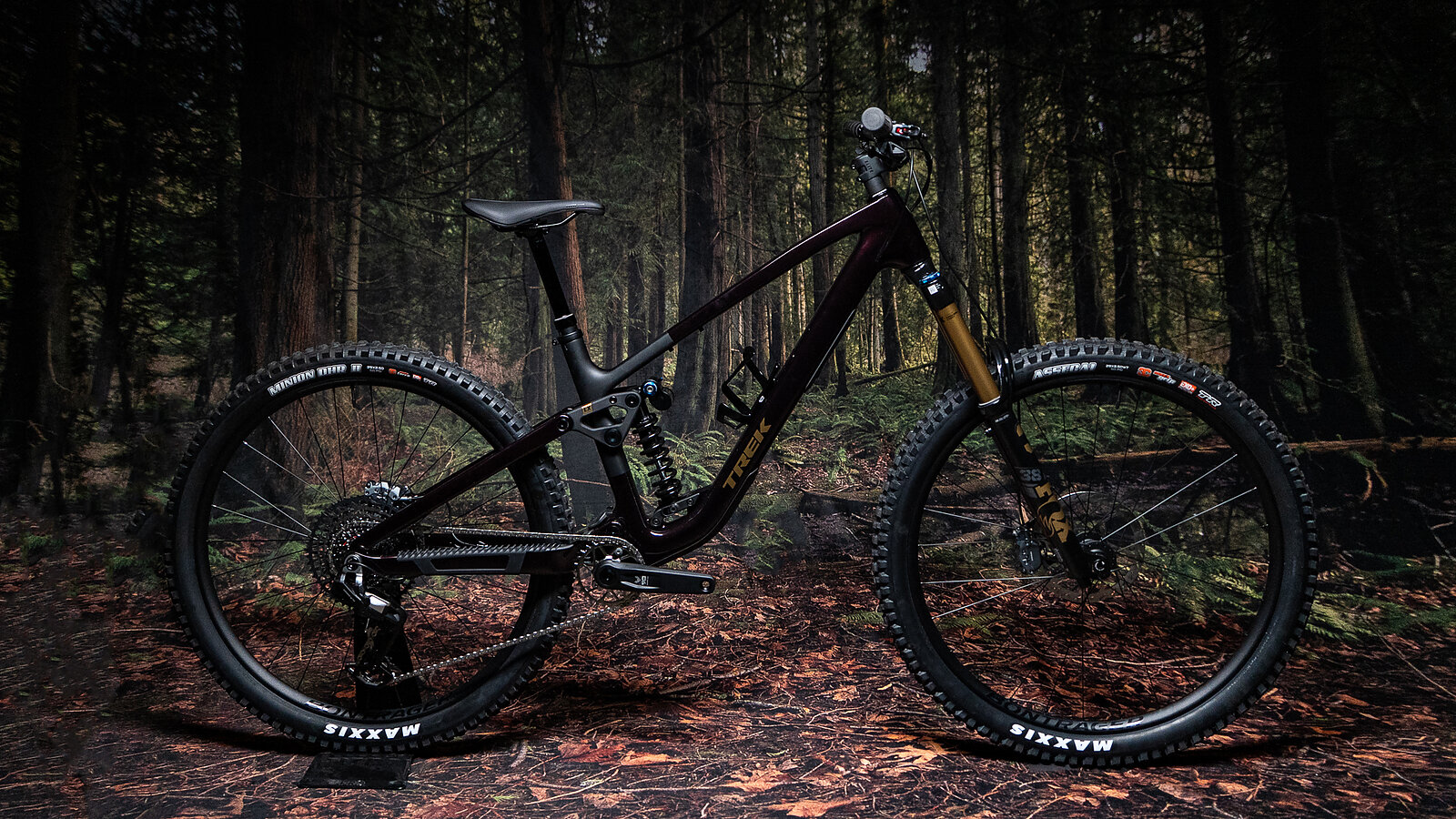
Trek Fuel LX All the modularity.
Words and Photos by Cy Whitling
Today, Trek launched its new Fuel family, and it's ... expansive. There’s a lot going on here. New bikes, new e-bikes, swappable links, and off-menu items. It’s all a little overwhelming. Luckily, my introduction was much more simple: I didn’t have geometry numbers or access to model flow charts before I started riding this bike. Instead I opened the box, saw a 170-millimeter Fox 38 and a Maxxis Assegai on the front of the bike inside it, and got excited. The first ride on that bike justified that excitement. There’s a lot of noise and info to digest around the new Fuel family, but at the center of that whirlwind of information is a bike that’s quite fun to ride. So let’s break down the new line, and then get into its performance.
Trek Fuel LX Details
- Travel: 160 mm (rear) 170 mm (front)
- Wheel Size: 29”
- Size Tested: Large
- Build Tested: Fuel LX 9 CA90
- Head Tube Angle: 63.45°
- Measured Weight: 36.31 lbs (16.47 kg)
- MSRP: $6,199
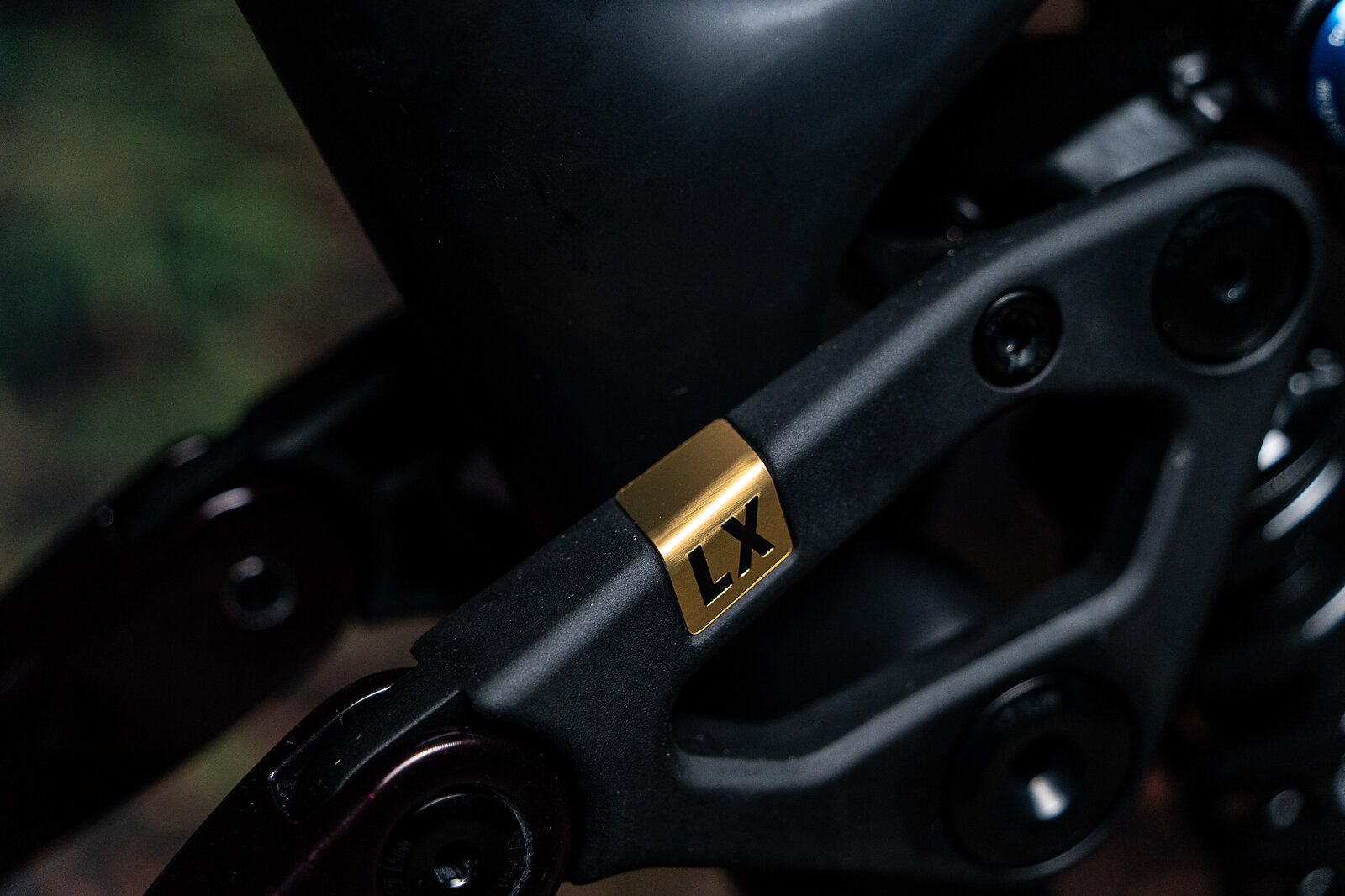
The New Trek Fuel Family
The Fuel is Trek’s do-it-all trail bike line, slotting between the more cross-country-focused Top Fuel and the bar-room-brawl-ready Slash. It’s the “default mountain bike family.” And it used to have just two members: the Fuel EX, and the Fuel EXe (a motorized version). Now it’s got six official members, with a few off-menu options, all of which use the same front and rear triangles connected with one of three different rocker links and two different lower shock mounts.
The Fuel EX is still the default configuration for a new Fuel, and it comes with 145 millimeters of rear travel and a 150-millimeter fork along with two 29-inch wheels. Mixed wheel aficionados can jump up to the Fuel MX which swaps the upper rocker link, the lower shock mount, and the fork air spring to deliver 150x160 millimeters of travel and a 27.5” rear wheel. Finally, remove the travel spacer in the shock, bump up to a 170-millimeter fork, and throw on a new rocker link, and you can ride the new LX I’m reviewing which comes with 160x170 millimeters of travel with two 29” wheels.
But that’s not all: You can run the higher shock mount with the LX rocker for a long-travel mullet. And every configuration has a swappable flip chip that allows you to change the progression. And every configuration has a motorized counterpart (now designated by a “+”, instead of an “e” at the end of the name). It’s a lot in a good way.
And in case you were worried, those bikes are all available in alloy versions as well as carbon. An alloy frame-only will run you $2,000, different rocker links are $100 each, and lower shock mounts are $20. That's a compelling deal in 2025.
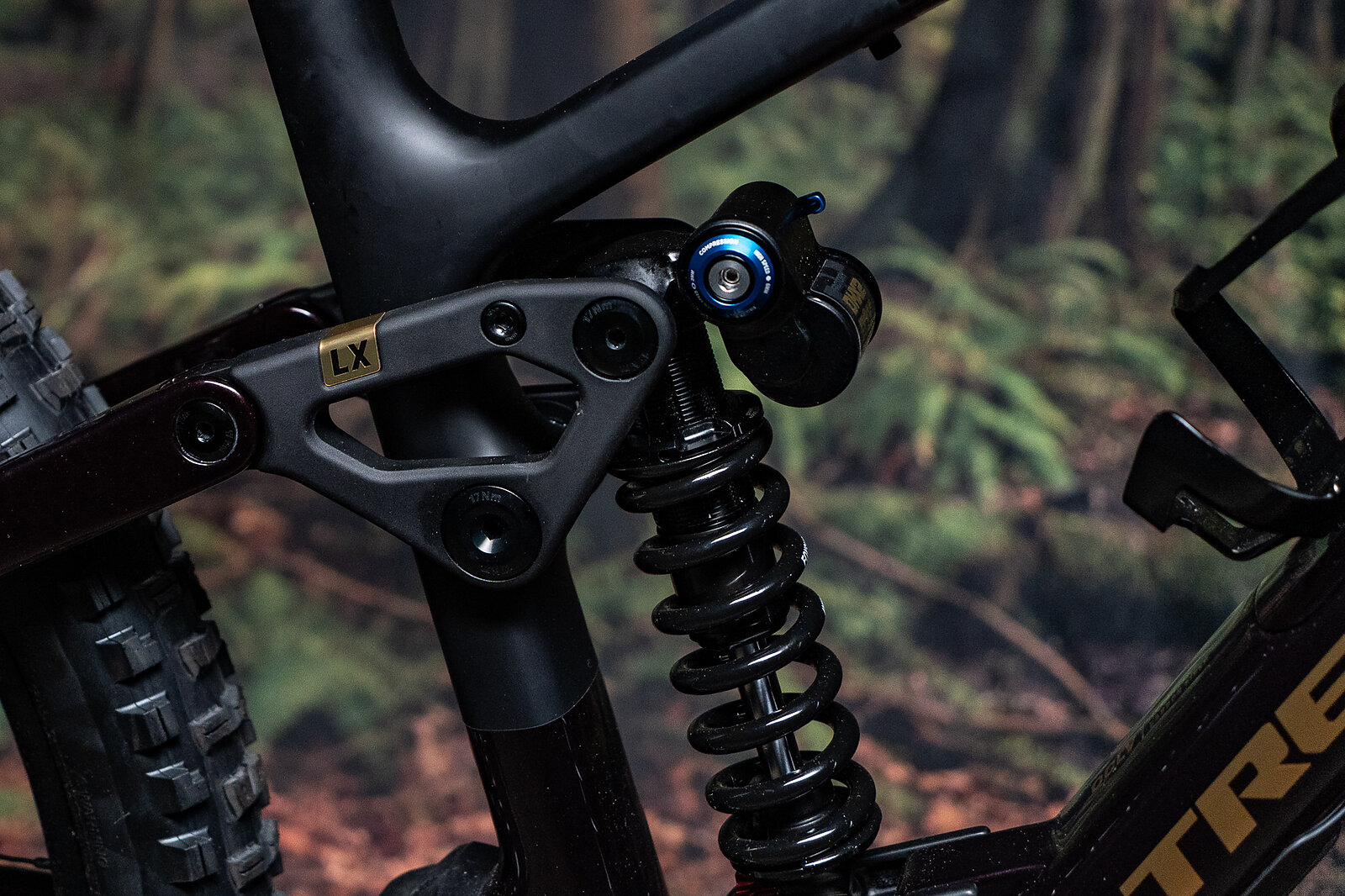
Trek Fuel LX Frame Details
The new Fuel forgoes the swoopy silhouette and Mino-link-heavy design of the old version. It also does away with the proprietary headset adjustment. Instead it uses a standard ZS 56/49 headset, and swaps rocker links and lower shock mounts to make geometry adjustments.
Trek says that the new frame is around 200 grams lighter than the old one, and it has a lot more seatpost insertion depth available—200-millimeter droppers should fit just fine in a medium. It’s also got more refined cable routing, the same updated internal storage as the new Top Fuel, and better chainslap protection (much better than any Trek I’ve ridden). In addition to all that, the electronic versions get TQ’s new HPR60 motor that’s significantly more powerful, with more range, than the HPR50.
My read: the new Fuel frame is good looking (really good looking) with the features and details that I’m looking for in a modern mountain bike. I’ve spent a fair bit of time wrenching on and living with the Top Fuel and Slash, and they’re two of the least frustrating frames I’ve spent time with.
The new Fuel has a threaded bottom bracket, 34.9-millimeter seat tube, and a native 180-millimeter rear brake mount. The in-frame storage works well, the cable routing is quiet, and the chain protection is excellent. And it has routing for a cable actuated rear derailleur. No weird standards, no proprietary shocks, just a bike to do bike things with.
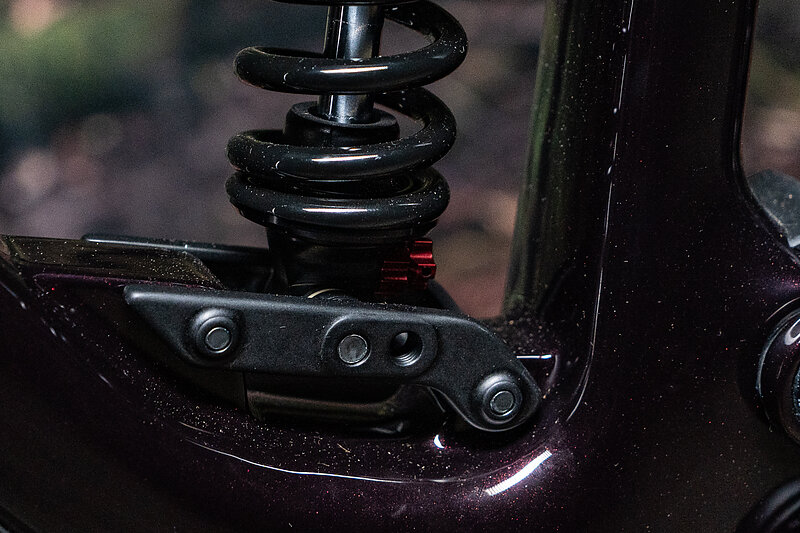
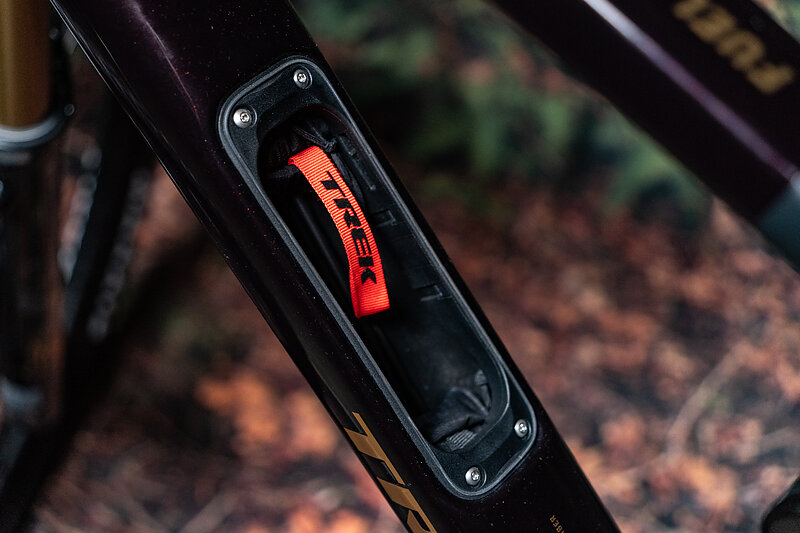
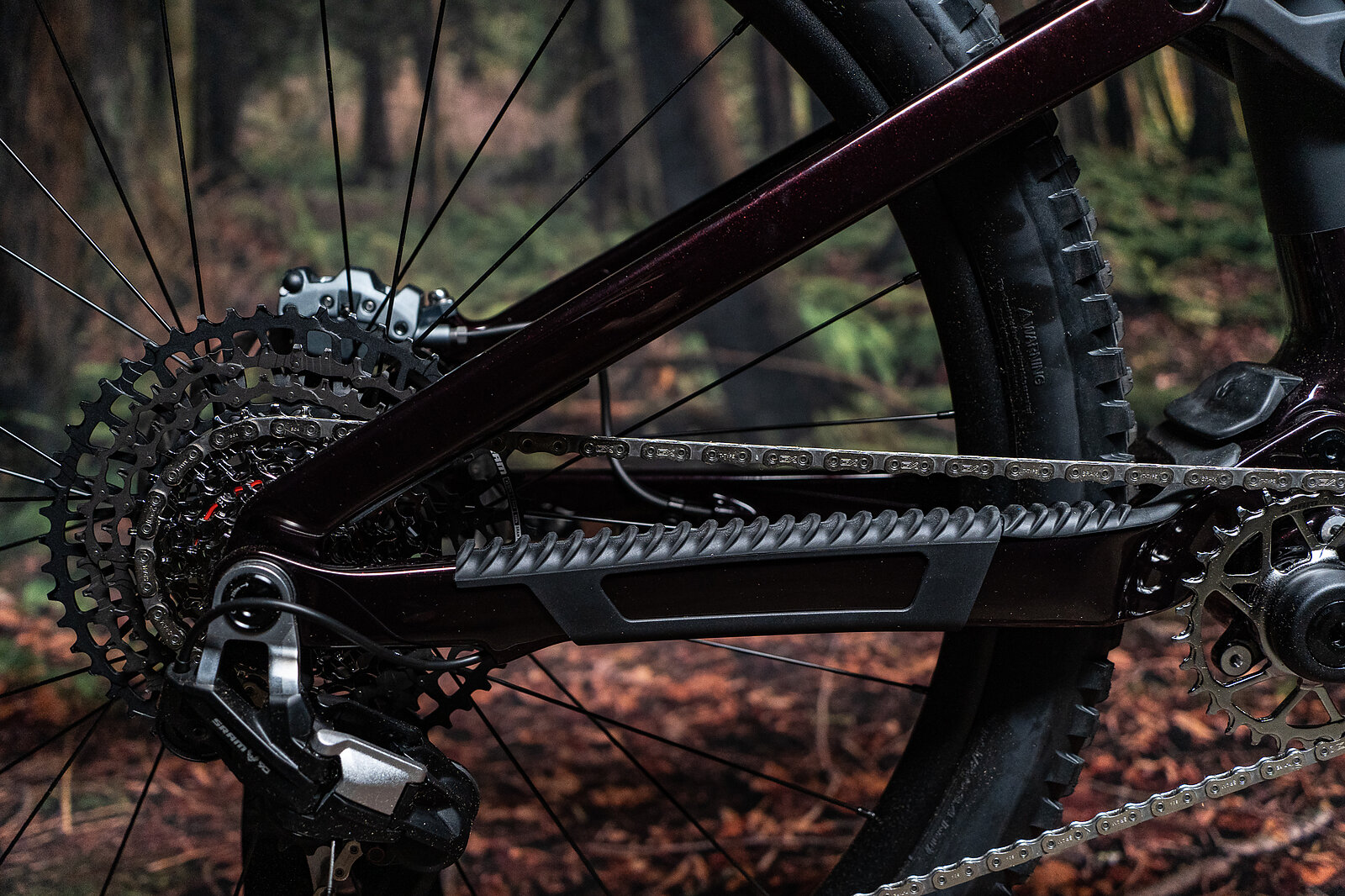
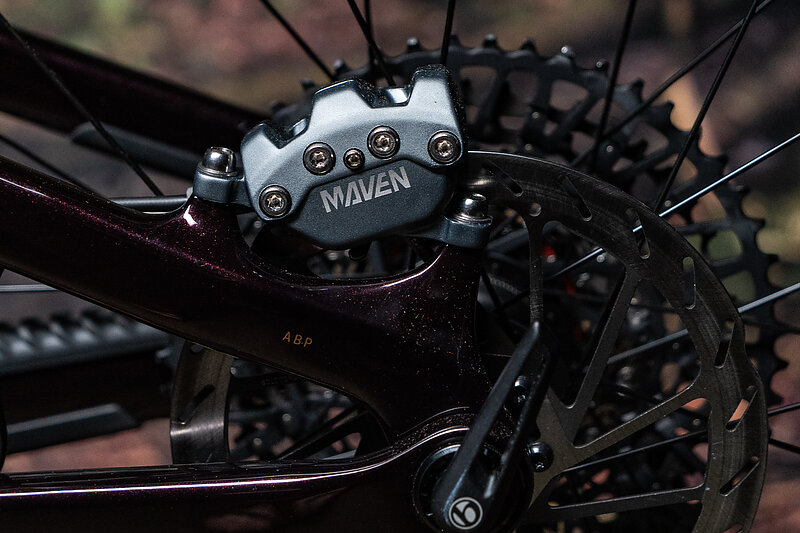
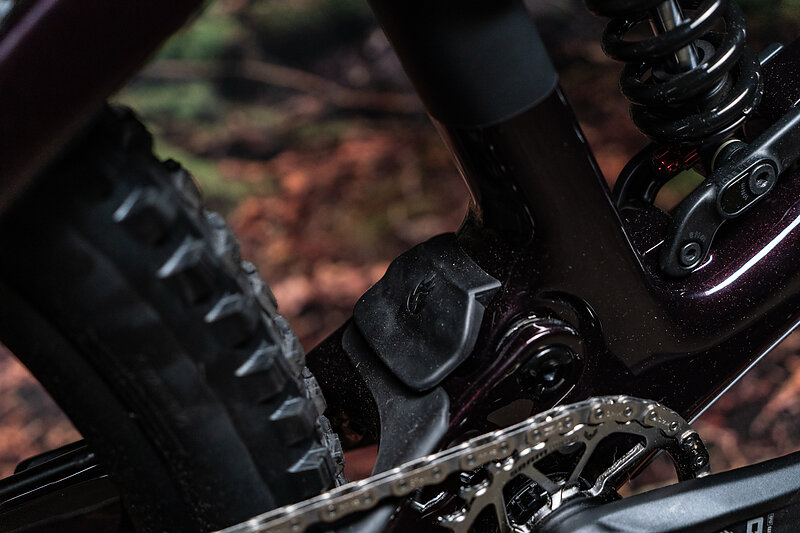
Trek Fuel LX Geometry
Unsurprisingly, with this many models, geometry gets complicated fast. So let's cover how the new EX is updated from the previous, and then talk a little about how that geometry trickles out over all the options.
Most importantly, the new Fuel cuts down the number of size options from eight down to five. No more M/L, just Small-XXL with 25ish millimeter jumps in reach between each size. Most geometry numbers stay within a millimeter or two of the previous version, except for stack height which jumps up 17 millimeters for the Large and XL, with a slightly smaller (7ish millimeters) increase for the Medium.
But of course, when you swap travel between variants, your geo changes too. So your reach shortens about 3.5 millimeters when you go from a Large EX to an MX, and it drops again to 473.2 millimeters on the LX. Along with that, your head tube gets slacker (63.4°) along with your seat tube (76.4°).
While other brands have made bikes with modular designs that allow for a range of travel configurations, Trek has managed to pull off a lineup that doesn’t lead to too many “weird” geo configurations. The longer travel variants aren’t outrageously short-reached, and the shorter travel ones don’t have painfully steep seat tubes. I think Trek could have released any one of these models on its own and the consensus would be that it has logical geometry for its intended purpose.
It’s worth noting that along with geometry changing with travel, Trek manipulates the leverage curve as well, so an LX in either progression setting is about three percent more progressive than an EX in the same setting. That makes a lot of sense given the intended use case for each bike.
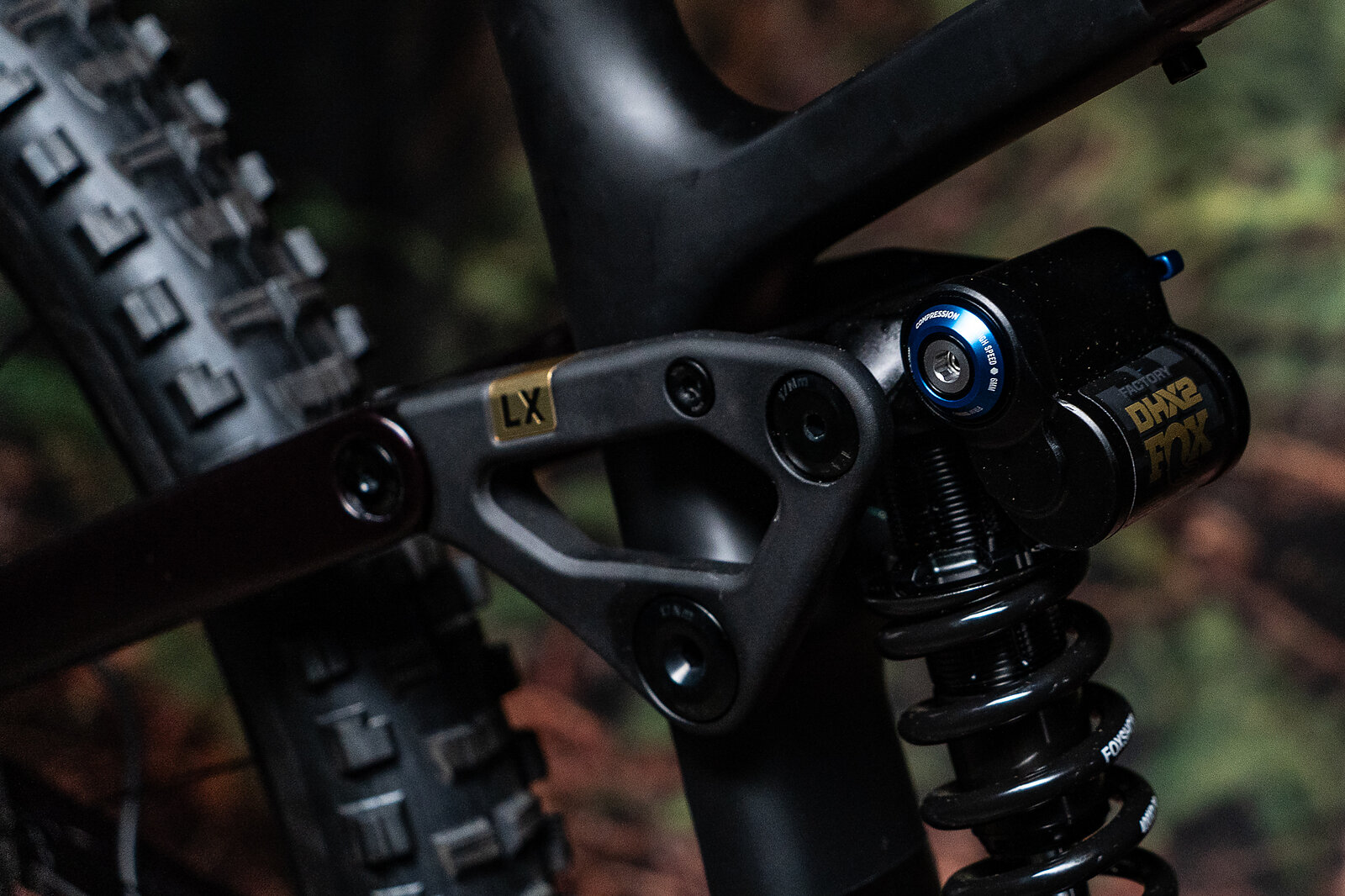
Trek Fuel LX Build
Back to those Maxxis tires on a Trek! Trek is expanding its Project 1 program with the new Fuel line to include many more build options. So, while the EX will be the default configuration of the bike, you can mix and match travel and components in Trek’s new web interface. Users can choose tires, wheels, suspension, and drivetrain from a menu of options. And it’s (relatively) affordable, you can get on a “custom” Fuel for around $5,000.
The Fuel LX I’m reviewing came with a fairly dialed build right out of the box. The Maven Bronze brakes and SRAM Eagle 90 drivetrain are exactly what I’d choose, and pairing these more affordable options with Factory level Fox suspension makes a ton of sense as do the Assegai (MaxxGrip no less!) and DHRII (MaxxTerra) tires. I’d bump the rear up to a DoubleDown casing on a personal bike, but that’s a tiny niggle.
Raceface handles the cockpit, while Bontrager covers the aluminum wheels and 200-millimeter dropper.
So far, this build has been excellent. I might need to bump up a spring rate out back, otherwise I’ve been running the bike stock, for now. That will change soon though.
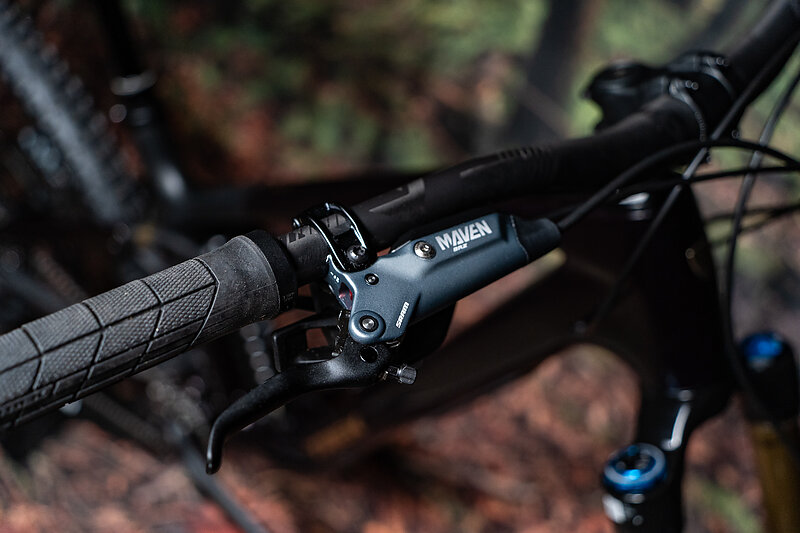

Riding the Trek Fuel LX
That’s a lot of info, but bikes don’t run on data. How does the Fuel LX ride? Exactly how you’d expect it to. Every Trek I’ve ridden in the last three years has been quite predictable, and this bike continues that trend. Point it at a trail, ride up, ride down, party on.
The Fuel LX pedals remarkably well for its travel range, I only found myself locking it out on extended road climbs. I’ve ridden a few 150ish millimeter bikes of late that weren’t this efficient. It feels quick and sprightly headed uphill, and that higher stack puts me in a very comfortable climbing position even though the seat tube angle isn’t the steepest in its class.
Going downhill, the Fuel LX does a very nice job of being capable, and ready for anything, without being ponderous. I wouldn’t hesitate to take it down any trail here in Bellingham, or (with a quick tire swap) on a weekend trip to the bike park. It doesn’t have the same “smooth everything out and make poor choices just for fun” feeling as the Slash, but it manages bigger hits and rough trails just fine.
I’ll go deeper on this in a follow-up piece, but my personal bike is a Specialized Stumpjumper 15 that I’ve voided the warranty on in an attempt to make it into something very similar to the Fuel LX. With a Cascade Components link giving me 156 millimeters of coil-sprung rear suspension, and a 170-millimeter fork, the Stumpy 15 feels similar to, but smaller than the Fuel LX. It’s shorter in terms of both reach and chainstay, which, combined with the mixed wheels on the Stumpy, make it feel quicker, more agile, and easier to stuff into small transitions.
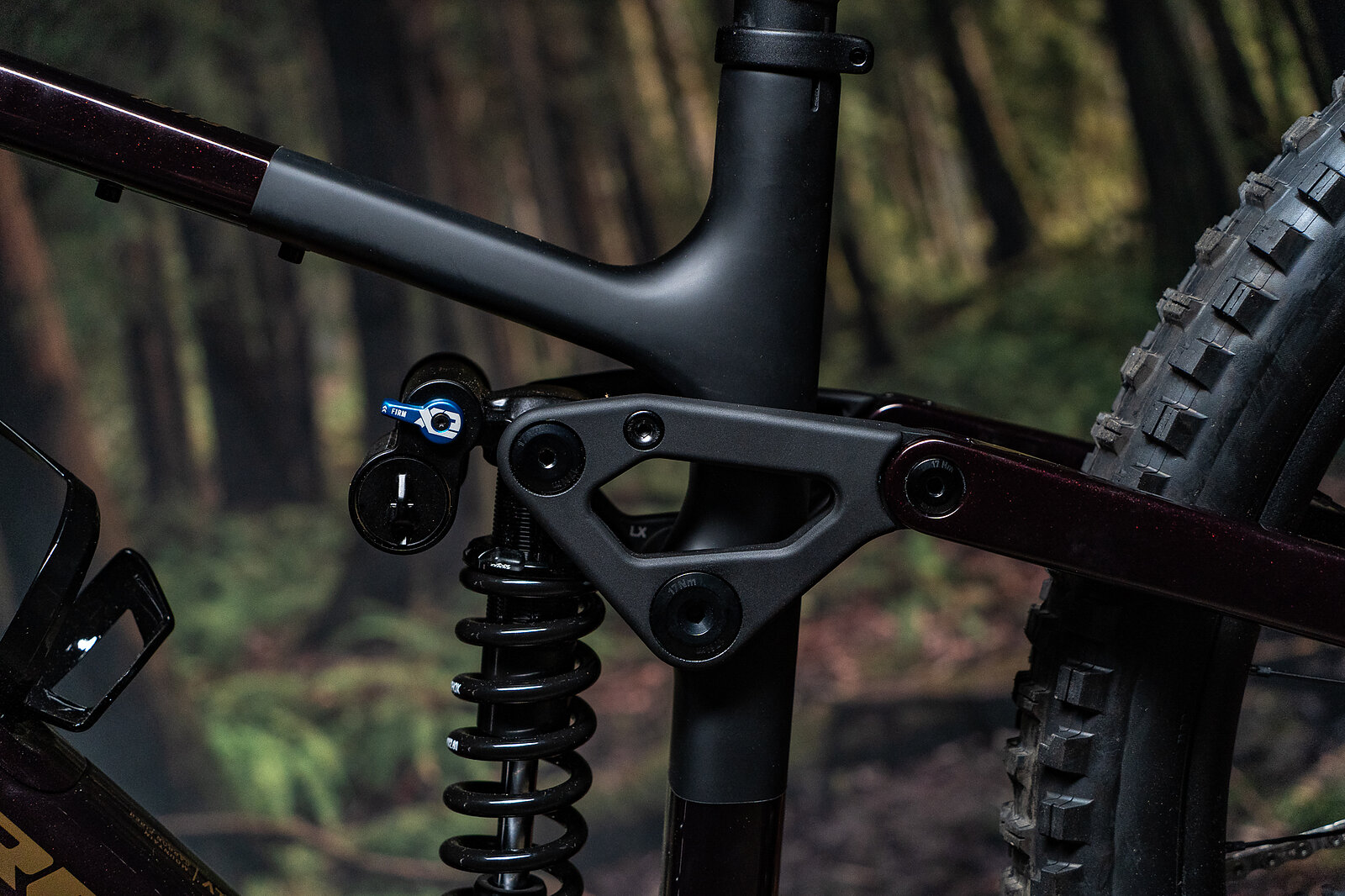
In contrast, the Fuel LX feels a touch more staid and composed in truly hairy situations while being slightly harder to change directions on. I rode one of my favorite steep, techy descents on the Fuel LX and I was blown away at how well it handled everything I could throw at it. I’ve been fiddling with and modding my Stumpy for months to get it to this point, and the LX feels comparable, or maybe even better right out of the box. I can’t wait to dial it in more.
That leads us nicely to the next stage of this review: Trek is sending me links and shock mounts so that I can try the EX and MX configurations, as well as an off-menu LXMX (160-millimeter rear travel with a 27.5-inch wheel—Remedy lovers rejoice) configuration. So I’ll have a followup piece comparing each configuration, as well as diving into the Fuel LX’s relationship with the Slash, and comparing it to the Stumpjumper 15.
For Now
The previous generation Fuel was a poster child for modularity and adaptability. It delivered a platform that was ripe for experimentation. Trek has built on that legacy with the new Fuel which delivers even more options to dial in the bike to your preferences and terrain. It doesn’t hurt that it’s got a good-looking, well-sorted frame to boot. So far, the new Fuel LX is one of my favorite bikes in this class and I’m excited to start experimenting with it.
Learn more: Trek Bicycles
